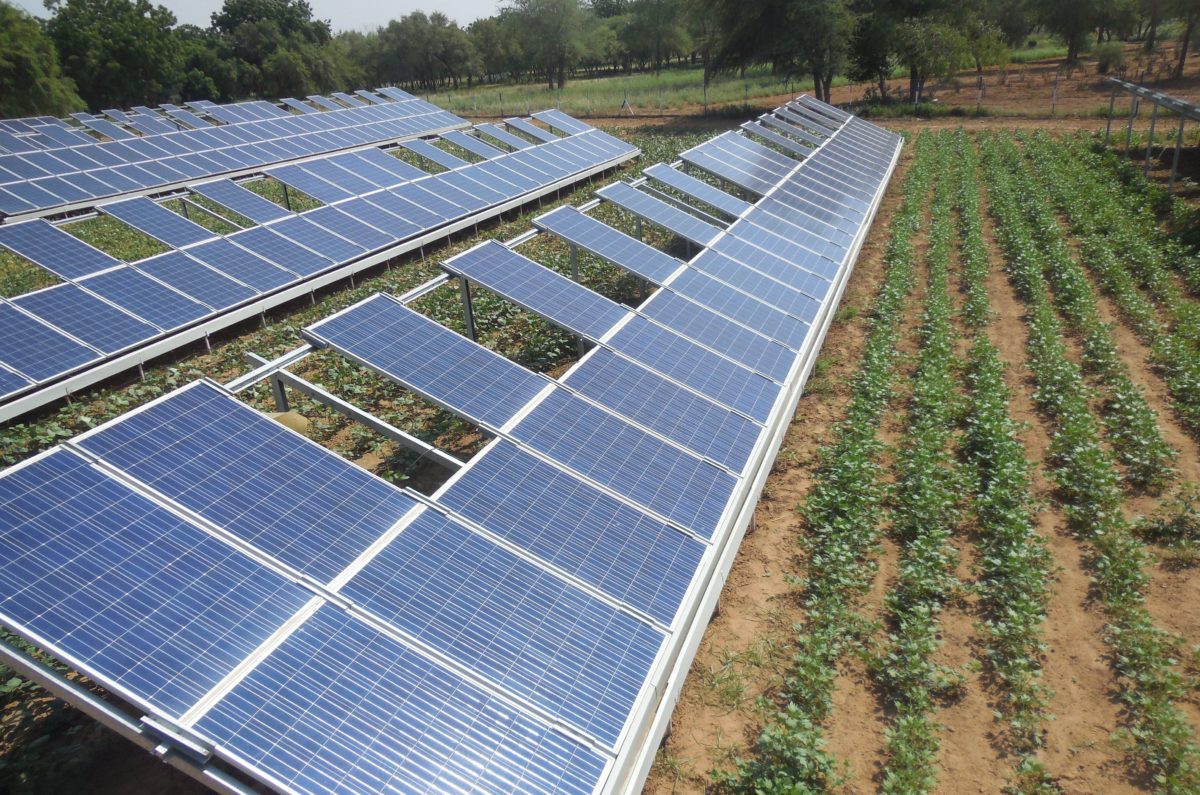When Dr Priyabrata Santra walked through the arid, sandy landscape of Jodhpur in 2016 clutching the blueprint of the country’s first agrivoltaic scheme, he knew the odds were stacked against the success of the pilot project.
Challenges abounded: strong winds which get harsher in the hot summer months; a scarcity of water to clean the planned PV modules; soaring ambient temperatures which would affect panel performance; and no grid connection at the remote farmer’s field in Rajasthan. It would be an uphill battle – growing crops in an arid zone is not the easiest of tasks.
However, having secured a grant from the natural resource management division of the Indian Council of Agricultural Research, Santra and his fellow scientists from the Central Arid Zone Research Institute (CAZRI) began installing solar in March 2017. The principal scientist and his colleagues inaugurated India’s first agrivoltaic project five months later.
The pilot project consisted of two locations: CAZRI Jodhpur and the organization’s regional research station at Bhuj. At Jodhpur, a 105 kWp, one-acre system comprised three 28m² blocks of panels plus a rainwater harvesting tank. The 25 kWp system at Bhuj occupied 666m².
Other states take note
The pilot has proved such a success it has been replicated by Junagarh Agriculture University and Sardar Kushinagar Dantiwara Agriculture University, both in Gujarat; by Amity University in Noida; by Banda Agricultural University, in Madhya Pradesh; as a ‘solar tree’ concept at Bihar Agriculture University; and by the Central Electronics Engineering Research Institute Pilani, in Rajasthan.
Regarding the challenges he faced, Santra told pv magazine: “In CAZRI’s agrivoltaic module we have addressed all these challenges and tried to minimize [their] negative impact.”
However, lack of grid connections are a major hurdle to large scale agrivoltaics, said the scientist, adding: “Off-grid agrivoltaic systems may be possible but large capacity of such systems may not be feasible.”
Even when local grid connections are available, the success of such schemes depend on adequate measures for the purchase of solar-generated electricity from power distribution companies.
However the benefits could be enormous, particularly if scaled up across a nation with such a huge agriculture industry. In arid zones, land productivity could rise 41%, said Santra, and such areas suffer a smaller dust load on modules than other Indian habitats.
Topsoil protection
In an agriculture sector dominated by smallholders, arid land agrivoltaics can provide steady, year-round income, even through periods of drought. The presence of solar panel structures alters the profile of the fertile topsoil, reducing wind erosion, and having power generation on-site opens up the possibility of introducing food processing operations.
CAZRI estimates the Rs25,000-30,000 per acre, per year which can be generated from traditional rain-fed farming in arid conditions could leap to Rs7.5-8 lakh on the same measure with an agrivoltaic system present.
The panels also bring a significant rainwater harvesting benefit, with a system installed at the top of the module harvesting 69.2% of rainfall and recycling it to provide 40mm of drip irrigation per acre.
Santra and his team found agrivoltaics fruitful for the production of leafy vegetables such as spinach and fenugreek below the modules with medicinal plants and high value cash crops thriving on ground between panels. The team found agrivoltaic crops should not be too tall, to avoid casting shade on the panels, should have low water requirement during their development stage and should not be sensitive to shade or partial shade.
Having overseen a successful pilot project, Santra told pv magazine agrivoltaics would be India’s best shot at meeting its ambitious target of doubling farm income by 2022.
This content is protected by copyright and may not be reused. If you want to cooperate with us and would like to reuse some of our content, please contact: editors@pv-magazine.com.








It is good idea.but who will bear the cost of solar panel.